Introduction to FCM360W te-b development board
Supported module list
Function list
Basic overview
QuecPython_FCM360W_TE-B development board is a Wi-Fi and Bluetooth development board launched by Quectel. Equipped with FCM360W module, it supports Wi-Fi 6 and Bluetooth 5.1 wireless connections, and provides large memory including 512 KB SRAM and 4MB flash memory.
The development board connection interface is two micro-usb interfaces, and provides a variety of interfaces, including UART, SPI, I2C, ADC, etc. The supporting antennas include external pin antennas, PCB antennas, etc.
Functional Description
The main components and interface layout of the development board are shown in the figure below
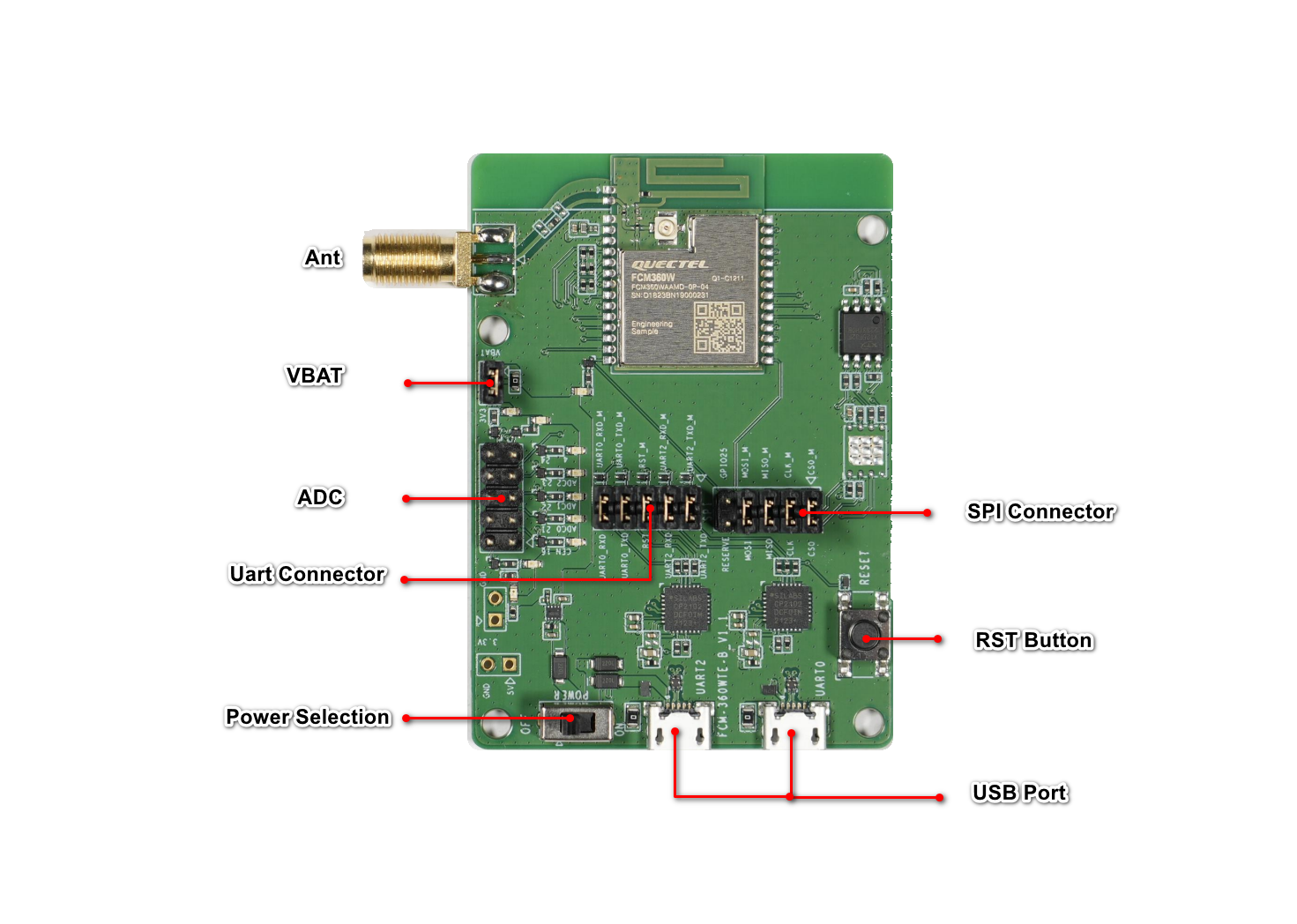
Download
Development Board Resources
Development board interface
The main pin layout of the development board is shown in the table below
| Pin header | Name | Pin | Function |
|---|---|---|---|
| UART | UART0_RXD | 26 | UART0 receive |
| UART | UART0_TXD | 27 | UART0 send |
| UART | RST | 11 | Module reset |
| UART | UART2_RXD | 19 | UART2 receive |
| UART | UART2_TXD | 20 | UART2 send |
| UART | UART0_RXD_M | 26 | UART0 |
| UART | UART0_TXD_M | 27 | UART0 |
| UART | RST_M | 11 | Module reset |
| UART | UART2_RXD_M | 19 | UART2 |
| UART | UART2_TXD_M | 20 | UART2 |
| SPI | RESERVE | 17 | Reserved |
| SPI | MOSI | 29 | SPI Master Output Slave Input |
| SPI | MISO | 23 | SPI Master Input Slave Output |
| SPI | CLK | 22 | SPI Clock |
| SPI | CS0 | 21 | SPI Chip Select |
| SPI | GPIO25 | 16 | GPIO25 |
| SPI | MOSI_M | 29 | SPI Master Output Slave Input |
| SPI | MISO_M | 23 | SPI Master Input Slave Output |
| SPI | CLK_M | 22 | SPI Clock |
| SPI | CS0_M | 21 | SPI Chip Select |
- The pins with _M in the name are directly connected to the module end
Tips
For more information about the development board, please visit https://python.quectel.com/en/resource-download?cid=252
Development board configuration
The peripheral resource pin allocation table is as follows:
| Serial number | Name | Model | Supported | Interface type |
|---|---|---|---|---|
| 1 | USB to serial port | CP2102 | Yes | UART |
| 2 | Button | - | Yes | GPIO |
| 2 | ANT | - | Yes | - |
Quick Start Guide
Hardware Preparation
Step 1: Required Items
- Development board
- USB-C cable (A-to-C)
- Windows 10 PC
- Nano-SIM card
- 4G antenna
Step 2: Antenna & SIM Installation
- Attach the provided antenna to the MAIN antenna port.
- Insert the SIM card into the Nano-SIM slot.
Step 3: Connect the Board
- Power the board via USB-C.
Step 4: Power On
- Press and hold PWK until the power indicator light on the mainboard (labeled as POW) lights up.
- If you short-circuited PWK_ON, there's no need to press PWK; the board will power on automatically.
If the PWR indicator is constantly on, the EVB is successfully turned on.
Driver Installation
- Download the QuecPython USB Driver from QuecPython Official Drivers.
- Extract and run
setup.exeorsetup.bat. - Verify installation in Device Manager (look for "Quectel USB" ports). Ignore unrelated devices like "Mobile ECM Network Adapter."
Tool Installation
- QPYcom: Download from QuecPython Tools. Extract and use directly.
- VSCode Plugin: Search for "QuecPython" in the Visual Studio Code marketplace.
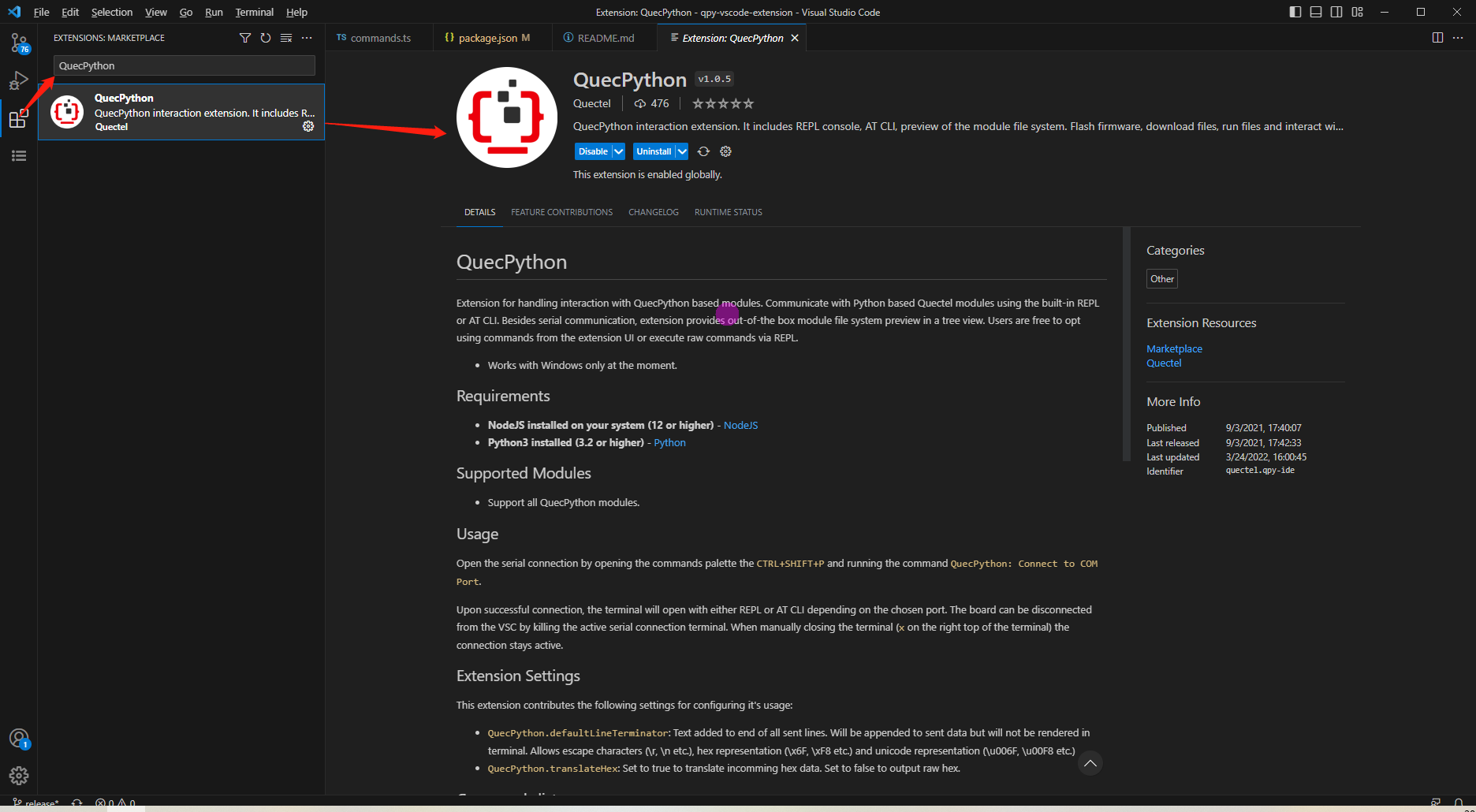
Firmware Burning
Firmware Download: Get the latest QuecPython firmware from QuecPython Firmware Page.
Burning Steps:
Open QPYcom, select the USB REPL port, and create a new project.
Choose the
.binfirmware fileSet mode to "Download FW" and click Download.
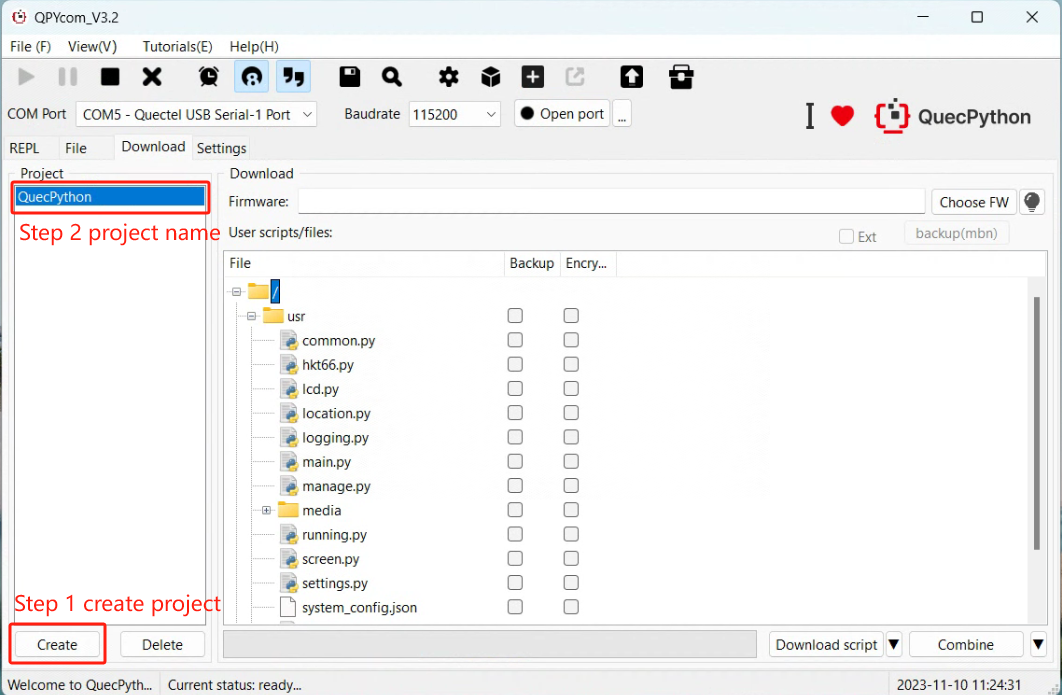
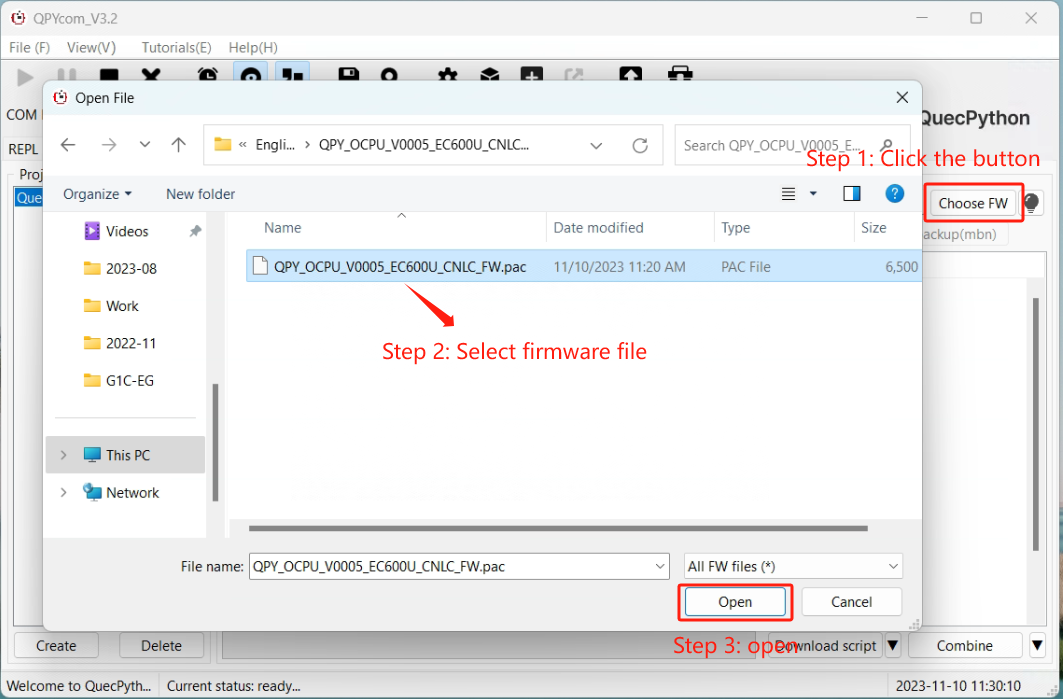
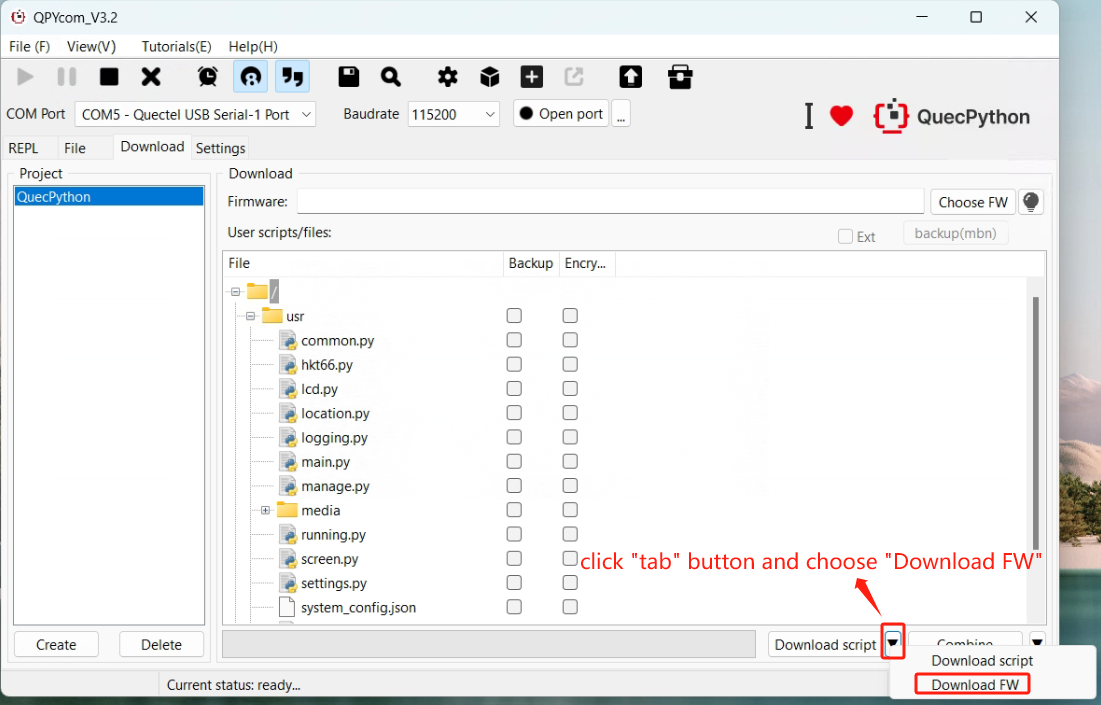
REPL Debugging
- Connect via QPYcom and open the REPL interface.
- Test with
print("Hello World!").
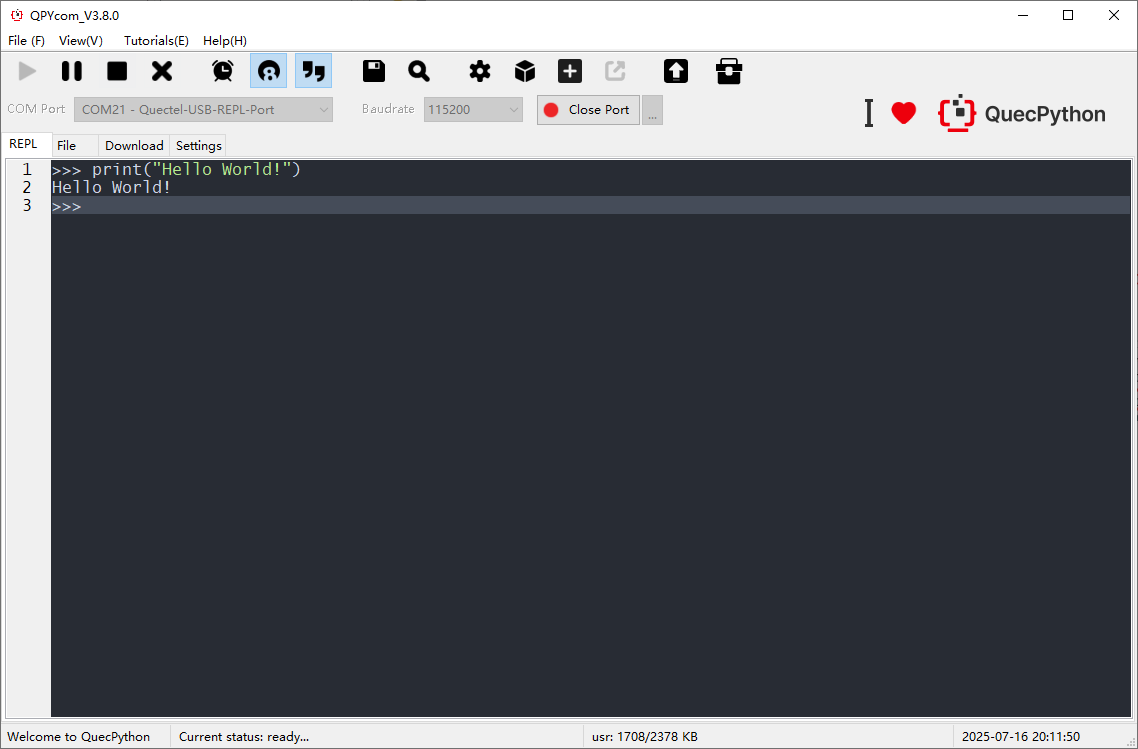
First Script Development
Writing a Script
Create helloworld.py:
print("Hello World!")
File Transfer
- Method 1: Drag-and-drop files via QPYcom’s GUI.
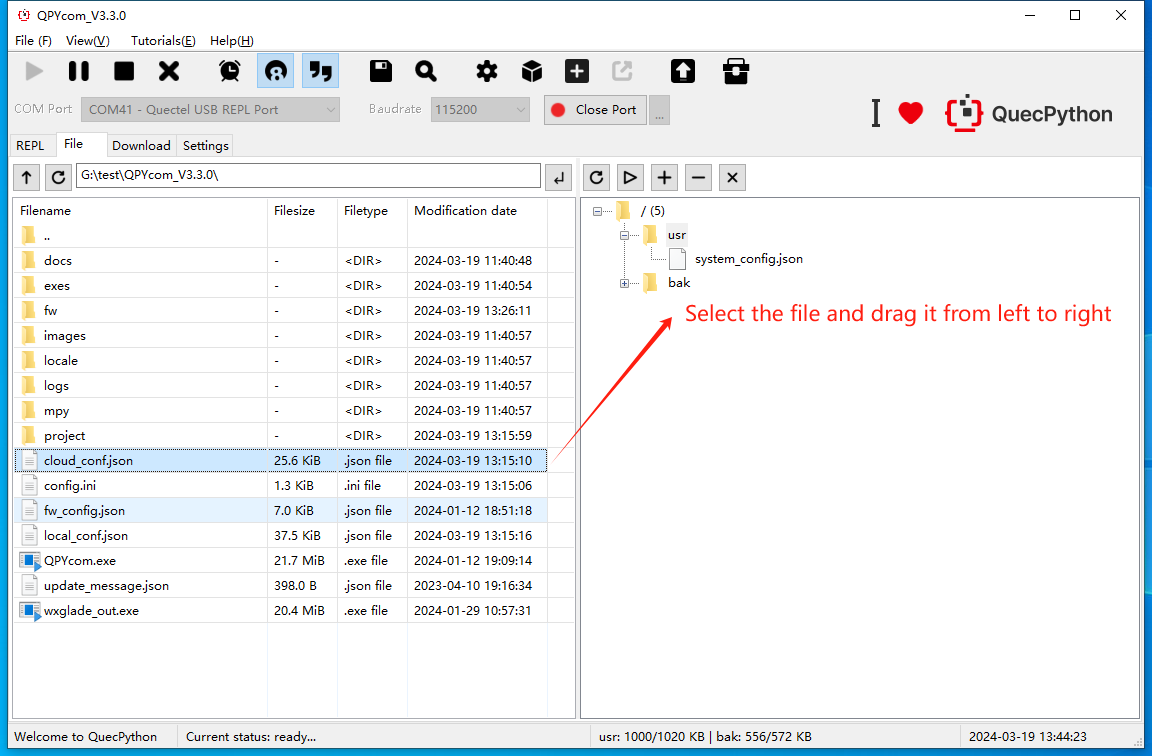
- Method 2: Use the "Download Script" feature in QPYcom.
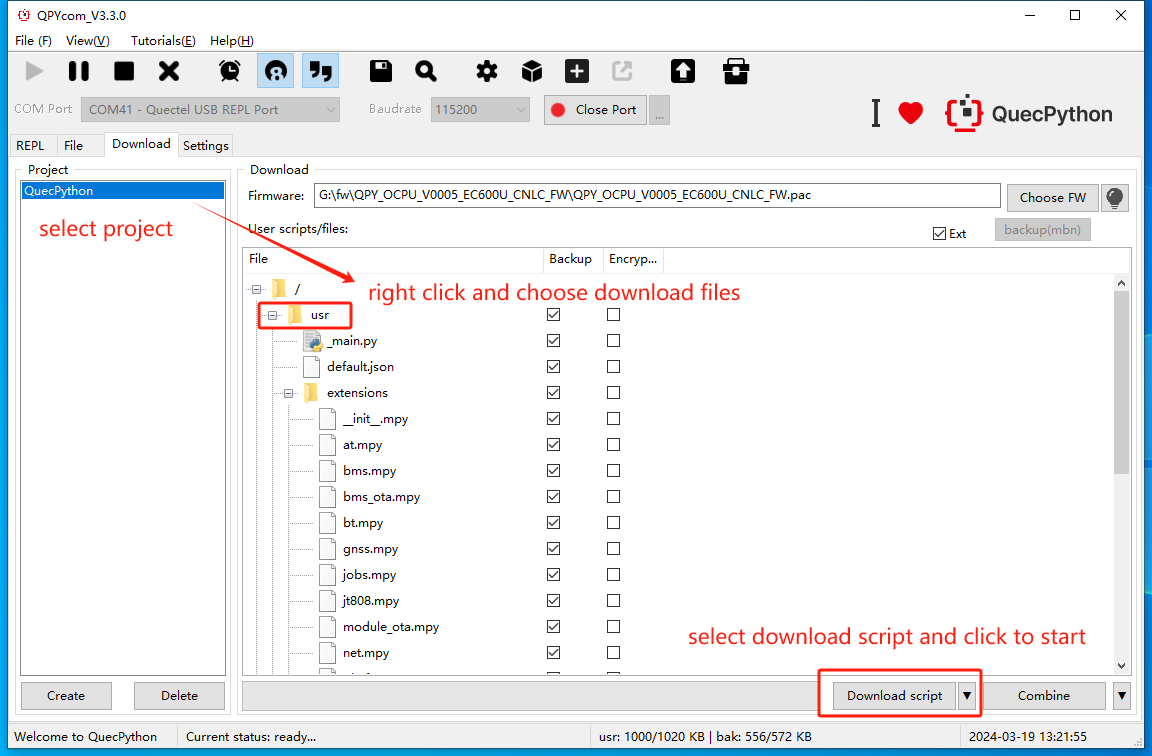
Running Scripts
Execute via REPL:
import example
example.exec("/usr/helloworld.py")
Stopping Program Execution
How to stop a running program. The following methods are provided according to the type of the running script file:
| Is the program name main.py? | Does the program contain a dead loop? | Does the program use multiple threads? | Stopping Steps |
|---|---|---|---|
| ✓ | ✓ | ✓ | (1) Press Ctrl + A to enter RAW mode (2) Press Ctrl + D to restart the QuePython virtual machine (3) Press Ctrl + B to return to the normal interactive mode (4) If the above methods fail, re-flash the firmware |
| ✓ | ✓ | ✗ | (1) Press Ctrl + C to interrupt the program execution (2) If the above method fails, re-flash the firmware |
| ✓ | ✗ | ✓ | (1) Press Ctrl + A to enter RAW mode (2) Press Ctrl + D to restart the QuePython virtual machine (3) Press Ctrl + B to return to the normal interactive mode (4) If the above methods fail, wait for the program to finish running |
| ✓ | ✗ | ✗ | (1) Press Ctrl + C to interrupt the program execution (2) If the above method fails, re-flash the firmware |
| ✗ | ✓ | ✓ | (1) Press Ctrl + D to restart the QuePython virtual machine (2) If the above method fails, directly restart the module |
| ✗ | ✓ | ✗ | (1) Press Ctrl + D to restart the QuePython virtual machine (2) If the above method fails, directly restart the module |
| ✗ | ✗ | ✓ | (1) Press Ctrl + C to interrupt the program execution (2) If the above method fails, re-flash the firmware or directly restart the module |
| ✗ | ✗ | ✗ | (1) Press Ctrl + C to interrupt the program execution (2) If the above method fails, re-flash the firmware or directly restart the module |
